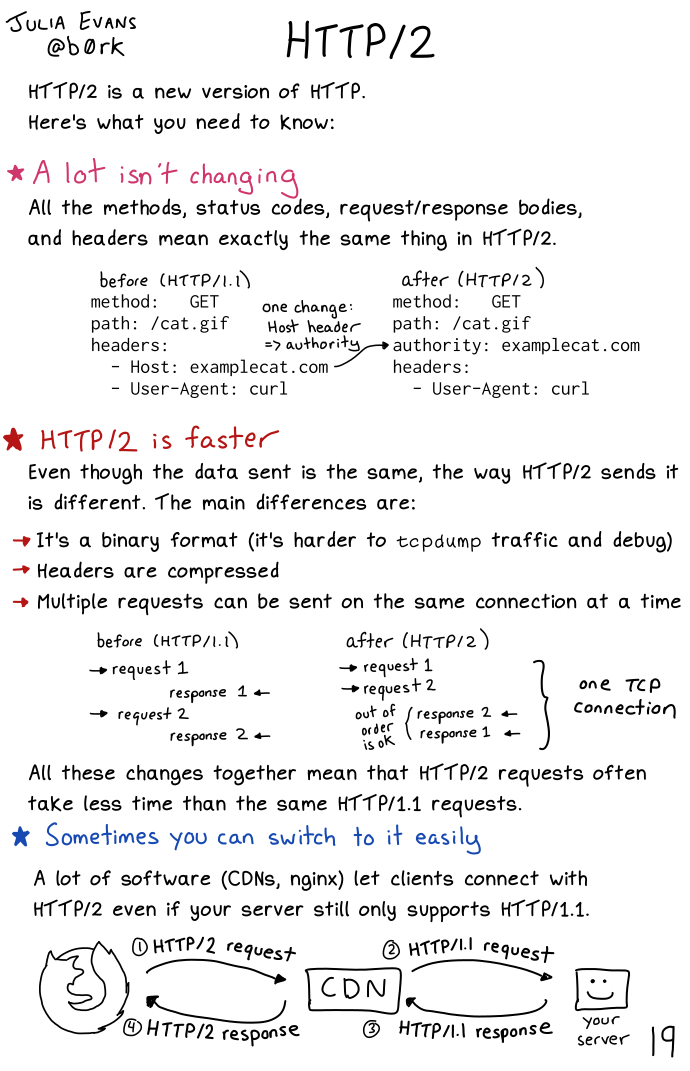
Here's a preview from my zine, HTTP: Learn your browser's language!! If you want to see more comics like this, sign up for my saturday comics newsletter or browse more comics!
 browse more comics!
get the zine!
browse more comics!
get the zine!
read the transcript!
HTTP/2 is a new version of HTTP. Here’s what you need to know:
A lot isn’t changing
All the methods, status codes, request/response bodies, and headers mean exactly the same thing in HTTP/2.
before (HTTP/1.1):
method: GET
path: /cat.gif
headers:
- Host: examplecat.com
- User-Agent: curl
after (HTTP/2):
method: GET
path: /cat.gif
authority: examplecat.com
headers:
- User-Agent: curl
one change:
Host header => authority
HTTP/2 is faster
Even though the data sent is the same, the way HTTP/2 sends it is different. The main differences are:
- It’s a binary format (it’s harder to
tcpdumptraffic and debug) - Headers are compressed
- Multiple requests can be sent on the same connection at a time
before (HTTP/1.1):
→ request 1
response 1 ←
→ request 2
response 2 ←
after (HTTP/2):
→ request 1
→ request 2
response 2 ←
response 1 ← (out of order is ok)
(one TCP connection)
All these changes together mean that HTTP/2 requests often take less time than the same HTTP/1.1 requests.
Sometimes you can switch to it easily
A lot of software (CDNs, nginx) let clients connect with HTTP/2 even if your server still only supports HTTP/1.1.
- Firefox to CDN: HTTP/2 request
- CDN to your server: HTTP/1.1 request
- your server to CDN: HTTP/1.1 response
- CDN to Firefox: HTTP/2 response
Saturday Morning Comics!
Want another comic like this in your email every Saturday? Sign up here!
